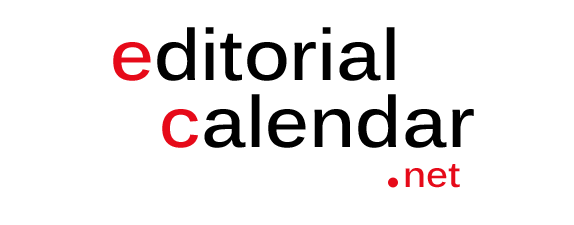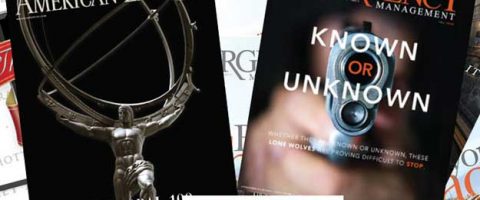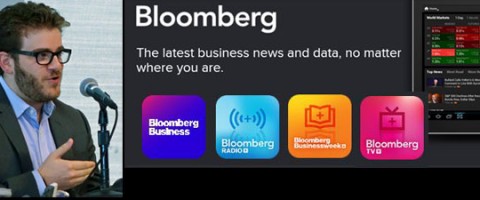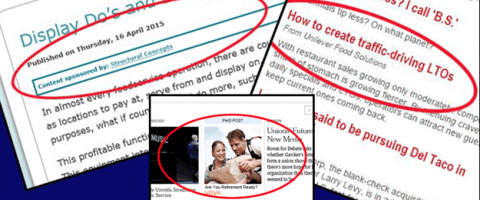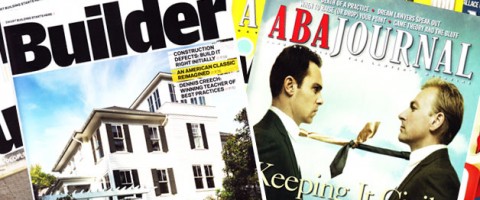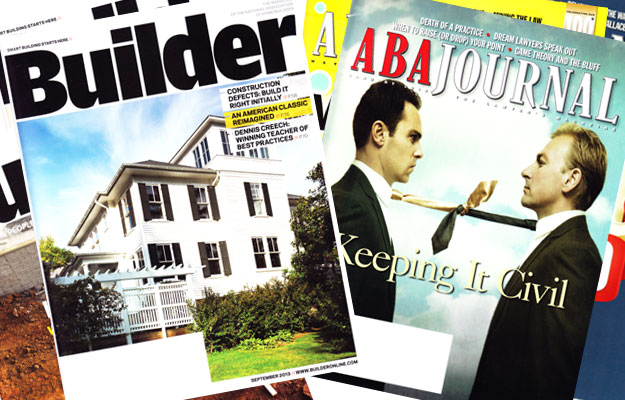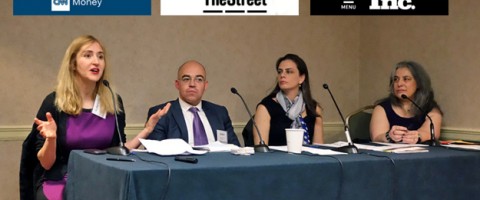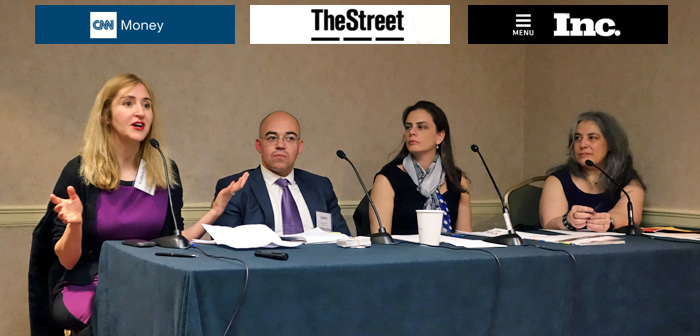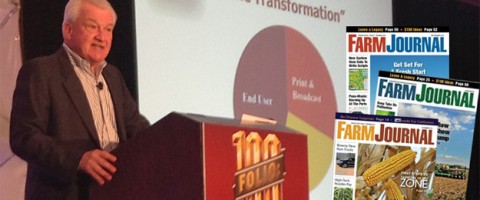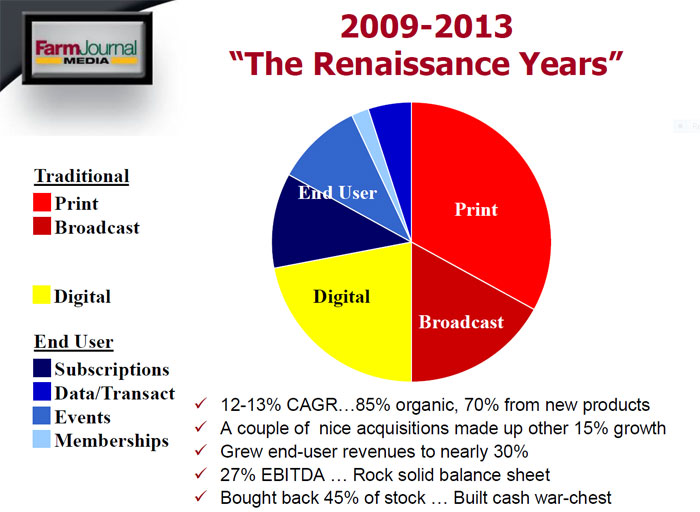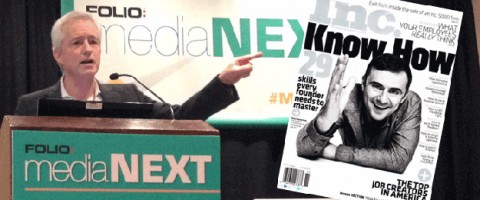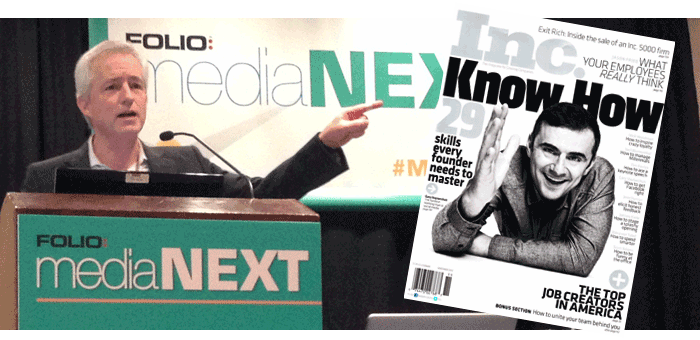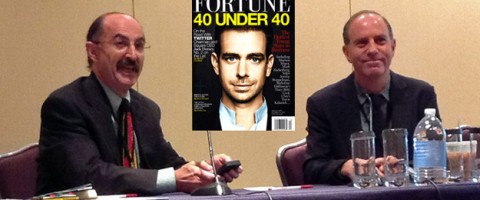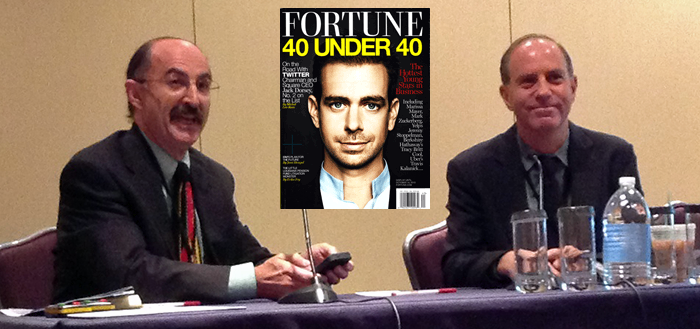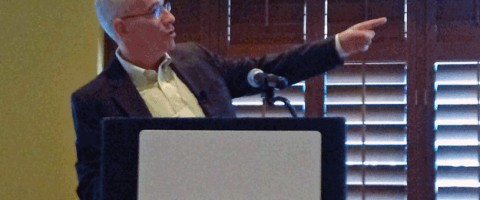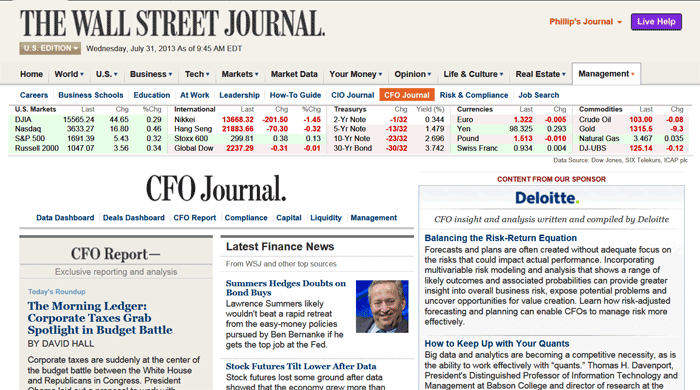Business Editors Face New Ethics Challenges
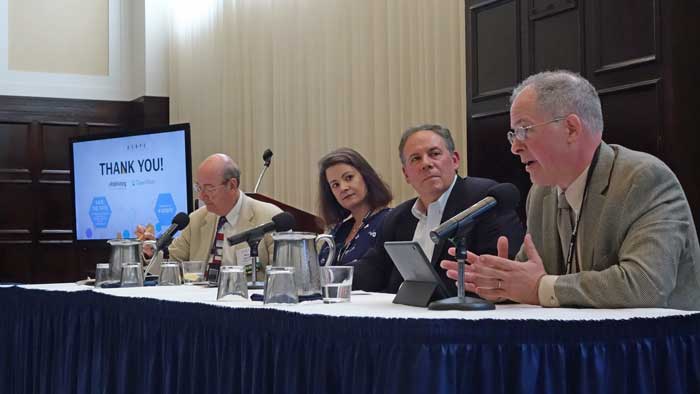
Participants in an ASBPE ethics panel at the National Press Club included (from left) Roy Harris, Beth Mirza, J.D. Solomon, and Warren S. Hersch.
What should you do when your publication’s sales reps request coverage of advertisers? How can you deal effectively with workplace harassment? And those new freelancers you’re taking on: How can you obviate conflicts of interest? Those were just three of the ethical conundrums addressed during the ASBPE’s annual conference at The National Press Club, Washington, D.C.
Conference attendees paid a good deal of attention to the growing erosion of the church-state wall between advertising and editorial. As vendors shift more of their budgets to the Internet, ad sales people are requesting more editorial favors to help move print space.
“In our world now, the concrete barrier between the editorial and advertising departments is more like a dotted yellow line,” said J.D. Solomon, Editorial Director at Professional Media Group. “Editorial is expected to sometimes go on the other side of it, but with caution.”
That caution arises from what Solomon called “two compelling and sometimes difficult to reconcile prime directives in B2B publishing.” The first is to maintain editorial integrity. The second is to avoid biting the advertising hand that feeds you.
“It’s not an easy line to navigate,” he concluded. “In fact, it’s a minefield.”
Editorial currency
Lying at the root of these conflicts, said Solomon, is the tendency of many sales reps to view company mentions as a form of currency that can be used to reward current advertisers and woo new ones. “The sales people like to send notes to their prospects saying, ‘Hey, guess what? You were mentioned in a story. Here's a link to it; isn't that nice? And by the way, maybe we should talk about some more advertising.’” More editorial mentions mean more sales. Hence the pressure for happy ink.
Solutions for the problem abound, some more effective than others. In a presentation titled “Navigating the Minefield of Editorial-Advertising Conflicts,” Solomon reflected on his experience directing the editorial departments of District Administration, published for school district leaders, and University Business, read by college and university leaders.
Solomon’s first stab at a solution was the introduction of a policy common to many other newsrooms: a prohibition on vendor quotes in published articles. The move was a practical one in this instance because Solomon’s magazines serve fields well populated with non-vendor subject matter experts.
While the new policy freed staff writers from much of the hounding to include favorite vendors in round-up features, the sales departments continued to feel advertisers should be recognized editorially in some fashion. Solomon responded with an Industry Viewpoint column presented as a sidebar separated visually from the regular editorial well. Because the vendors responded to specific questions on industry topics not directly related to their products, readers actually obtained useful information. “This has worked out well because it gets vendors into the publication in a responsible way.”

An industry viewpoint column presented vendor commentary on topics of vital interest to readers.
Maybe the Industry Viewpoint column was successful, but two problems arose. First, hard feelings resulted when vendor comments submitted past deadline had to be omitted. Second, so many vendors wanted to participate that the feature began to hog space. “It got to the point where we could have run two pages of quotes for each column,” said Solomon. Solution? He removed the column from the print product and posted it exclusively online. “Now we can include as many vendors as we want. And if a vendor misses the deadline we can just add the comments later. No one is the wiser.”
The sales reps are still not completely satisfied, admitted Solomon, since they often complain that the vendor comments are not in the print edition. “But at some point, you have to say, ‘Look, it’s a vendor mention, and it works.’”
The magazine has introduced another vehicle for the dissemination of vendor viewpoints: A paid-for Leadership Column, labeled as sponsored content, which vendors create with the help of the publisher’s content marketing department. This replaced a more traditional guest column which had consisted of unsponsored editorial copy, and which attracted too much vendor participation. “The Leadership Column has proven to be a workable solution,” said Solomon. “And the sales reps are happy because they get another product to sell.”
What’s new?
It’s among the stickiest of issues in the B2B field: How do you handle all those press releases touting new products, equipment installations, company awards and personnel advancements? While vendors crave the publicity, trying to be even-handed editorially can swamp any publication’s available space.
Solomon’s first attempted solution seemed reasonable: Include all the above materials in an Industry News section at the tail end of a daily e-newsletter aggregating material from other websites. Alas, this solution proved less than ideal because so much of the industry news consisted of personnel announcements and industry awards, inclusion of which made the e-newsletter far too large. So Solomon decided to limit the material to new product announcements and major new installations.
So far so good. But what about all those personnel changes and industry awards looking for a home? Solomon decided to house them in yet another feature. “We created something called a PR Portal online, where advertisers could post any press releases they liked,” said Solomon. While the portal consisted of paid advertising, regular advertisers could post press releases for free. It worked. “Now public relations agencies and marketing people get credit when they send emails to clients with links to their announcements.”
Solomon came up with another vehicle to meet the need: Each issue sports a feature describing how a half dozen or so educational institutions are implementing a specific vendor’s product. “It’s editorially written, there’s no fluff, it’s useful to our readers, and its’s very popular along the vendors.”
What’s hot?
As the above comments suggest, a lot of attention is paid to the topic of new vendor offerings. And it’s not just because advertisers crave coverage. “In B2B publications, new product information is important,” said Solomon. “How to handle the topic responsibly and ethically is always a challenge.”
At one time the publication published an annual Top 100 Products section selected by the editors. Problems arose as sales reps lobbied for the inclusion of their favorite vendors’ merchandise. To alleviate any sales-side pressure, item selection was removed from the hands of the editors and given to the readers in an annual Readers’ Choice poll.
What at first seemed like an ideal solution, though, introduced new problems. Very often top-quality products were ignored by responding readers while obscure items would end up with lots of votes. Since the result was less than useful to readers, the magazine replaced the Top 100 concept with an annual paid-for Advertiser’s New Products Showcase. Frequent advertisers are given free listings.
One more thing: Each issue sports a product focus section containing capsule descriptions of new products in a specific category. “Sometimes the products don't actually have to be new to get in,” notes Solomon. The presentation is kept plain, without any vendor logos, to encourage more paid advertising.
Urgent issues
Panelists at an ethics roundtable (pictured) addressed additional challenges beyond the erosion of the advertising-editorial divide. One was workplace harassment, a topic attracting renewed national attention today with the rise of the #metoo movement. “Harassment is any unwelcome conduct as determined by a reasonable person,” said Beth Mirza, Director of Online News Operations at the Society for Human Resource Management. “If you think some behavior looks bad, then it is bad. You're a reasonable person and you can report it.”
The important thing is to take action, said Mirza. “You need to say something to somebody. You can say it to the person who is harassing, you can say it to the person who's being harassed, you can say it to the manager, or you can say it to an HR person. That's what's going to stop a culture in which harassers are excused for their behavior.” Finally, said Mirza, there must be consequences for improper behavior, no matter what level of success the perpetrators are bringing to the business.
Warren S. Hersch, senior reporter for Money-Media and past president of the ASBPE, addressed the ethical challenges that can arise when an editor or writer takes an active role in a covered industry. While covering the life insurance field, Hersch himself had decided to become a licensed agent for the purpose of deepening his industry knowledge.
If such an initiative can lead to better reporting, it also poses significant conflicts of interest. For example, should any sales commissions be donated to charity? And should the writer be prohibited from reporting on any carrier for which he or she served as an agent? Hersch cautioned that such questions should be addressed before a writer ventures forth into a real-world venture.
Finally, Roy Harris, interim ASBPE Ethics Committee Chairman, addressed the tricky topic of vetting freelancers. This task has become more challenging and more vital in a publishing environment where a greater number of independent writers are chasing fewer jobs. As publication pay scales have flattened or fallen, a greater number of freelancers are shuffling gigs in public relations, sponsored content and journalism. More than ever, it’s easy for writers to inadvertently engage in conflicts of interest.
As a partial solution, some publications ask freelancers to sign ethics policies which require the disclosure of conflicts of interest. Others, faced with a limited number of freelancers who can write in a specific field, prohibit writers from covering specialty subsets for which they have received corporate monetary compensation.
Story by Phillip M. Perry
Posted June 25, 2018
Obtain more information about the ASBPE at http://www.asbpe.org/
Building a great B2B magazine
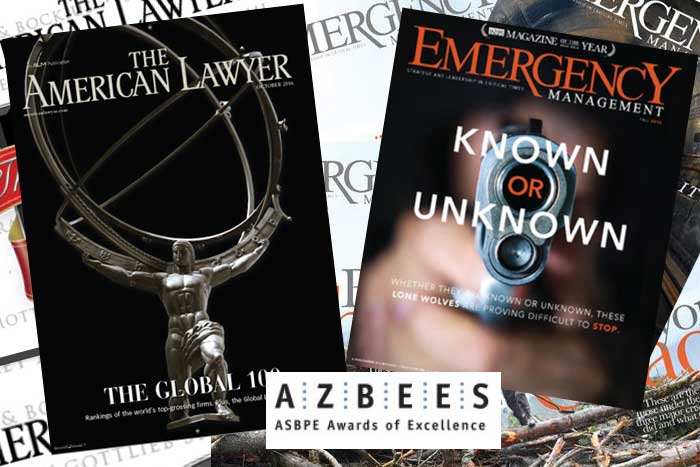 Offer exclusive content. Solve real world problems. Communicate with readers.
Offer exclusive content. Solve real world problems. Communicate with readers.
Common principles, all, at great business-to-business (B2B) magazines. In a recent webcast sponsored by the ASBPE, editors Kim Kleman of The American Lawyer and Jim McKay of Emergency Management spoke about the winning publications of the latest “Azbee” Magazine of the Year awards.
“Editing a B2B magazine is a tough job,” said Sam Oches, ASBPE webcast chair, in introducing the speakers. “From researching and reporting to management and strategic thinking, editors face a tall order in assembling a comprehensive product that is valuable to their readers.”
Gold content

Kleman
Start with unique value. “My first and foremost strategy is to give readers something exclusive, something they will pay a handsome fee for,” says Kleman.
For The American Lawyer, that something is a database loaded with forty years of numbers on matters such as law firm revenues, salaries, staff size, and profits per partner. Kleman believes this resource gives her publication a fundamental advantage over the competition. “I would counsel anybody out there: Find your audience and the things they're most interested in, then determine how you can offer something only you can provide. I call it gold content.”
The American Lawyer’s data cater to the competitive nature of the world's most elite lawyers. “They want to know how they're doing versus their competitors and how much their partners are making versus those at the firm down the road,” says Kleman.
The deep array of figures allows the magazine to reveal important trend information, adds Kleman. “How has this particular firm done over the years? What happened to the industry over the same period?”
Behind the numbers
Kleman emphasizes the need to dig below the surface: “It would be a boring magazine if what we wrote was just about numbers and facts and data and spreadsheets,” she says. Instead, the numbers serve to stimulate interesting topics. “With numbers as the underpinning we can really go deep. We may decide that we need to write about a certain firm, about the tick-tock of how it went down or how it rose to its current height. We can also do lawyer profiles within those firms. Which firms are exploring new strategies that seem to differ from the rest?”
Unusual initiatives are of particular interest to a field largely conservative in its business approach. “We love to do stories on things that are new and extraordinary,” says Kleman. “Maybe these don't rely as heavily on financial data, but they are certainly part of the conversation going on in law firm board rooms today.”
Here are some other tips from Kleman:
* Surveys such as The American Lawyer’s “Global 100” of top grossing law firms can help magazines stand out from competitors.
* Keep in touch with readers. “I try to get out and talk to my readers a lot,” says Kleman. “I typically have lunch or drinks or something two or three times a week with law firm leaders.”
* Have something fun at the end of the book. The American Lawyer, for example, has a column on the quirkiest lawsuits of the month.
Offer solutions

McKay
When it launched in 2006, Emergency Management filled a void. There was no publication devoted to news and analysis of government responses to hazards such as hurricanes, floods, fires and terrorism. “I think one of the things that really propels us as a publication and website is the dedicated readership,” said editor Jim McKay. “Our readers feel strongly about their profession. They tune in and pay attention. They let us know when they do or don't like something. That helps us. We listen. We don't want be arrogant.”
“We try to offer solutions in our stories,” said McKay. “What's working and what's not working? I think our readers appreciate the information we give them about what's happening around the country and what other people in the field are doing.”
Unlike The American Lawyer, this magazine makes extensive use of freelancers. “I have three or four freelance writers who've been writing for me for several years now, and I trust them,” says McKay. “They write the way I like stories to be written. I know each writer's strengths and weaknesses. They always come through for me. I pay them what I can to keep them. I see them as a huge strength in the magazine.”
McKay’s freelancers are mostly former newspaper journalists. “They've learned the rules,” he says. “They write concisely. They get to the point quickly. I like their active voice and no-nonsense style. It's something I think our readers appreciate, being first responders and emergency managers.”
In contrast, says McKay, industry experts will often get one aspect of a story down well, but fail to develop the big picture. “Sometimes the experts are biased. I really believe that if you have journalists who are well-schooled, tireless, and enjoy the subject matter, you can't go wrong.”
Paper and pixel
Both editors balance their online presence with the demands of their print magazines. “We try to use as much content as possible for each one of our mediums in its own way,” says Kleman. “We don't have the luxury of saying, ‘this is just for the magazine. It won't see the light of day online.’” For each new story, the staff asks questions such as: “Would this lend itself to some great video of people talking? Would this be a slide show online? Would this be an interactive chart? Then what would this concept look like for the magazine?"
While just about everything used in the magazine finds its way online, the reverse is not true. “There's a lot more that we publish online that can't, for space reasons, get into the magazine,” says Kleman. “We cherry-pick the best news of the month for The American Lawyer.”
Emergency Management also tends to emphasize breaking news online, says McKay. “The magazine articles, in contrast, look back at lessons learned from prior disasters and offer those to readers around the country.”
Story by Phillip M. Perry
Posted Jan. 17, 2017
Musical Background Informs Business Journalism
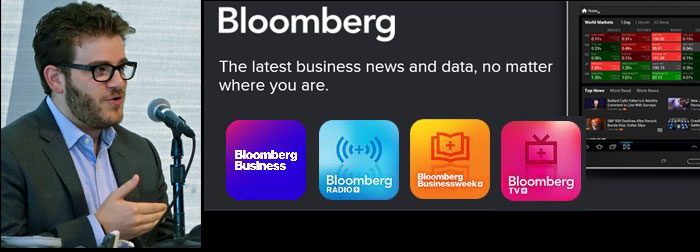 Maybe it’s a good thing Michael Shane worked as a professional musician before landing his current gig as managing editor at Bloomberg Digital. Editing for the web, it turns out, is something like playing Chamber jazz: A successful performance marries the improvisation of an Ornette Coleman riff to the discipline of a Bach cantata.
Maybe it’s a good thing Michael Shane worked as a professional musician before landing his current gig as managing editor at Bloomberg Digital. Editing for the web, it turns out, is something like playing Chamber jazz: A successful performance marries the improvisation of an Ornette Coleman riff to the discipline of a Bach cantata.
The self-expression part of that cognitive dialog, and its concomitant risk, is only too evident to any blogger who has hit the “post” key on the far side of prudence. “It's dangerously easy to say ‘yes’ to things on the web,” says Shane (pictured, above). Breaking news, after all, passes across the virtual desk all the time, and each item possesses its own allure. “You say ‘Oh, I'll just write that story.’ Ten minutes later it's out and your reputation is destroyed.”
The way to protect yourself (and your organization) is to harmonize the elements of self-discipline, training and skill. “At Bloomberg we have established clear routines for making decisions and working together,” says Shane. “That kind of discipline allows us to improvise when we need to. If you don't have a disciplined approach as a foundation, then when stuff hits the fan you won't have the flexibility to respond to it.”
All together now
Shane might well have absorbed another skill as he played his clarinet with the Cleveland Symphony: A conductor’s organizational talent. His current duties demand the coordination of Bloomberg’s multifarious story-telling initiatives across many digital platforms. Those include web-based magazines, radio, and television. Furthermore, each week’s paper edition of Business Week must be transmogrified into a web presence.
“We're talking hundreds of stories per day that have to find their way to the right place at the right time,” notes Shane. “Part of what I do is help everybody collaborate.” That means working closely with senior editors who receive copy from Bloomberg’s 2,600 journalists in over 70 countries.
The end goal, of course, is service to the reader. Shane estimates that over 50 million people visit Bloomberg’s digital platforms monthly. Giving them want they want can be quite a challenge.
Know your audience

Bloomberg business stories appear on a variety of devices.
What, come to think of it, do readers want? Shane addressed that question in these terms: “One of the very first editors I ever worked with on the web said ‘they don’t know what we know.’ That has always stuck with me. The audience doesn't know what we know. That's why they read our stuff. We can't forget that, whether we're thinking about story selection or angles.”
Telling what you know means, first, getting headlines early and accurate. “Breaking the news first and being right is really important, especially in a place like Bloomberg, where moving a story one second before a competitor can move a world market,” says Shane.
But headlines alone are insufficient. Thanks to burgeoning Twitter and Facebook feeds, breaking news has reached a state of such ubiquity that the provision of analysis has become equally important in making a web publication stand out. “The web audience wants an answer to the question ‘what does it mean and why does it matter?’” says Shane.
Enter the interpretative second day story. Writing a great one builds a reader loyalty that creates a foundation for additional value. “If you can't tell the second story, then you don't really put yourself in a position later on, to tell the feature story, the enterprise story,” says Shane. “You don't really have the credibility you need to participate in that conversation. On the web you have to build a robust track-record so you have work to refer to when you're telling longer stories, or you're looking at a story from a different angle.”
Cut to length
If news and analysis compose a story’s meaning, length is a critical element of form. Shane identifies two broad groups into which second-day stories fall. The first consists of succinct, efficient stories of fewer than 800 words. There’s a big audience for these, says Shane, largely because more people are reading stories on their smart phones, while commuting or walking down the street or sitting on their couch because they don’t want to go to their computers. The second group consists of enterprise stories of more than 1,000 words, for which Shane identifies a “nice big audience.” (And stories from 800 to 1,000 words? Shane banishes them to an “editorial wasteland).”
Given these two popular story lengths, the editorial conversation must include a consideration of the right format for each story. Even when a topic lends itself better to a shorter treatment, Shane spends considerable effort considering how to present it in the most powerful way. “This is something I think about a lot,” says Shane. “Does a story need to be 400 words or can it actually be a really phenomenal chart and three sentences? Or maybe a photo essay with captions?”
Stories that fall into the 800 to 1,000 word wasteland get special attention. Can the story be done with fewer words, or does it need more? Or can it be turned into two shorter stories? Finally, stories that appear to work best in long form are subject to further analysis. Might a 1,500 word piece, for example, be more impactful if split into three 500 word linked stories?
These comments suggest that length is a matter more of necessity than intent. “Short is not necessarily bad,” says Shane. “Short doesn't mean less smart. Short doesn't mean careless. Short just means that's how many words you need. You see this in any other discipline where you're making something out of thin air, whether it's music, or art, or film, or fiction-writing and story-telling. It really only needs as many words as you need, and not any more or any less.”
Give us long form
Now, how about those stories that really need to eat up the digital landscape? Given its reputation as a shorticle nirvana, it’s ironic that the web is more convenient than print for a long form treatment. Consider this: One of the most successful stories in the history of Bloomberg was a 38,000-word behemoth by Paul Ford titled “What is Code?”
 The article took up an entire issue of Business Week, and readers loved it. “Since we relaunched our site in January, ‘What is Code?’ had the highest level of user engagement of any story that we’ve ever published,” says Shane. Of course, that came as a surprise to many, not least because of the piece’s demanding subject matter. “It was an insanely long story that demanded a lot of its readers. The best stories ask a lot of their readers, I think.”
The article took up an entire issue of Business Week, and readers loved it. “Since we relaunched our site in January, ‘What is Code?’ had the highest level of user engagement of any story that we’ve ever published,” says Shane. Of course, that came as a surprise to many, not least because of the piece’s demanding subject matter. “It was an insanely long story that demanded a lot of its readers. The best stories ask a lot of their readers, I think.”
For the long form treatment to work, editors must know their audience. “The biggest conversations we had while we were planning that article was ‘Who is the audience?’” says Shane. “On one hand it was a very technical piece about the history of programming languages and how they work, and how they talk to each other, and where they're going. On the other hand, the story wasn't written for people who already know all that stuff.”
Lesson learned: The web lends itself to long form analysis when mandated by subject matter readers find compelling. “It was, I think, a heartening moment for everybody who works in media and journalism and story-telling,” says Shane. “It shows that there is absolutely room to do insanely ambitious off-the-wall things.”
Polymath playground
There’s another lesson learned from the Bloomberg experience: Today’s business writing thrives on diverse skills. “The digital newsroom is the perfect playground for the polymath of the 21st century,” says Shane. “If all you know how to do is write or edit, you're really not that useful to me in my newsroom. Today it's more important than ever to bring other skills.”
Such as? “We're looking for people who have an intrinsic understanding of social media and its place in the newsroom, who understand how to work with teams making video, and how to work with designers and developers,” he says. “So that when we're collaborating on something the process is as efficient and as fast as possible without sacrificing quality.”
As those comments suggest, technological knowledge should be part of the cognitive mix. Says Shane: “If I have a reporter and an editor who understand what CSS is and how it works, have experience working with video producers to tell stories, can go with the video team to shoot and interact with the subjects there, and have an idea in their head of what the video and the piece are going to look like in the end, that's going to be a much more efficient and successful collaboration.”
Mastery of diverse skills, then, fosters collaboration. And working well together, says Shane, is of paramount importance to a successful newsroom—especially one such as Bloomberg’s where so many stories move on so many platforms. “No story ever makes it to the web unilaterally,” he says. “There's always collaboration required, whether it's on the extreme end, like the Paul Ford piece, or something much simpler.”
Diverse backgrounds
The value of diversity extends beyond technical skills into broader knowledge fields. “In my opinion, nothing is more interesting than an unconventional background for a journalist,” says Shane. “I think that having a varying set of experiences, especially if you're working digitally, can be really helpful.”
Shane’s own musical background (he never attended journalism school), is, of course, a case in point. “As a musician I spent a lot of time in a room, by myself, playing an instrument to no one,” he says. “What I took from that was the value of planning. Practicing in music is really just planning. It's like putting money in the bank. You have a limited amount of time to do it and the way you spend your time has to be very thoughtful. It doesn't matter if you practice ten hours a day. If you're not thinking while you're doing it, and making decisions and drawing conclusions, then you're not going to get any better.”
Planning requires both creative thinking and self-control, qualities that Shane values to this day. “It is the rigor and discipline of working in classical music that I try to bring to the newsroom,” says Shane. “Which is weird for me because I'm actually a very zany, extroverted guy. But I think that working in classical music really grounded me and balanced me out.”
Shane instills into his staff a similar appreciation for discipline that provides the freedom to innovate. “I really, really believe that if you give people a process and tools they can rely on, when the time comes for them to be flexible and creative, muscle memory will take over and give them the space they need.”
--
This story is based upon a presentation by Michael Shane at a July, 2015 gathering of the American Society of Business Publication Editors (ASBPE) in New York City. The session was moderated by ASBPE president Mark Schlack.
Story and photo by Phillip M. Perry
Posted September 5, 2015
Making Native Content Work
Can business publications run native advertisinq without forfeiting their integrity? Three editors addressed that question in a recent webinar titled “The Rise of Native Content: How to Make it Work for Your B2B Publication Without Sacrificing Your Ethics.”
The webinar panelists seemed to agree that native advertising can be a legitimate money-maker for a magazine--as long as everyone involved plays by the rules.
 “We feel it's important to maintain our ethics and to not erode the quality of our main product,” proffered Joe Carbonara, Editor, Foodservice Equipment & Supplies, and Editorial Director for Zoomba Group. “We have established clear editorial guidelines in terms of what we will and will not accept from advertisers. And we consistently communicate these guidelines with our sales staff, with people we meet at trade shows and so forth.”
“We feel it's important to maintain our ethics and to not erode the quality of our main product,” proffered Joe Carbonara, Editor, Foodservice Equipment & Supplies, and Editorial Director for Zoomba Group. “We have established clear editorial guidelines in terms of what we will and will not accept from advertisers. And we consistently communicate these guidelines with our sales staff, with people we meet at trade shows and so forth.”
Road map
What makes an effective set of native advertising guidelines? The panelists zeroed in on two critical elements: Visual distinction and reader value.
For starters, native advertising must be distinguished visually from the traditional editorial well. An example of such a policy in action was offered by Kayley Bogdan, Project Manager, Custom Marketing Solutions, CSP Business Media: “While our native ads are formatted like articles, we include a sponsored content label with a ‘brought to you by’ or ‘from’ line so readers know the copy is from a sponsor.”
Additionally, sponsors are expected to avoid product puffery in favor of copy that provides readers with real value. “For us, so much of the success of our native advertising and content marketing lies in the relevance of the topic to our audience,” said Bogdan. “We look for content that's educational and informational on an industry level. Something that goes beyond a statement of product features, or of the benefits of a product or service--something that our audience is going to find really impactful and really effective.” Toward that end, Bogdan has created a document with branded content guidelines, made available to advertisers who want to contribute content on their own.
First principles
 As the above comments suggest, magazines looking to exploit native advertising feel the need to develop operational guidelines that obviate a poisoning of the editorial well. But that can require concerted deliberations. “When the digital side of our native advertising business started to take off we really struggled with how we should treat custom content,” said panelist Bogdan. “It is very different, after all, from the traditional paid advertising model because it appears in the editorial stream, and when that happens it kind of crosses that infamous grey area.”
As the above comments suggest, magazines looking to exploit native advertising feel the need to develop operational guidelines that obviate a poisoning of the editorial well. But that can require concerted deliberations. “When the digital side of our native advertising business started to take off we really struggled with how we should treat custom content,” said panelist Bogdan. “It is very different, after all, from the traditional paid advertising model because it appears in the editorial stream, and when that happens it kind of crosses that infamous grey area.”
Bogdan began by looking at what other companies in the food service B2B space were doing. Then a “custom content task force” was created to serve as a sounding board for the company’s native advertising and custom marketing initiatives. The task force included representatives from the digital, sales and editorial departments, all of whom worked together in a collaborative effort to develop the company’s custom marketing efforts. “We had a meeting of the minds to develop firm guidelines,” said Bogdan. “This led to a written document which we now use as kind of a Magna Carta, as a guide for developing all of our future native advertising products.”
The task force continues to oversee the publisher’s custom content initiatives. “I take new ideas for custom marketing or native advertising initiatives to our task force before we do any development work, just to make sure we're all on the same page,” said Bogdan. While task force meetings can be “a little heated,” in Bogdan’s words, she feels they are critical. “They allow us to consider all perspectives on how new native advertising initiatives might affect each part of our business. They also keep open the lines of communication so editors are not surprised when they see a new native ad on our web site. For us, it’s been absolutely key for everyone to know what's going on and to be in the loop.”
 It’s likely that enhanced communication between advertising and editorial will be critical to success for any magazine looking to exploit the potential of native advertising. “We haven’t dipped our toes into native advertising for our online publication yet,” said panelist Frank Kalman, Senior Editor of Human Capital Media, whose print magazines run occasional vendor-sponsored supplements. “We haven’t seen a huge demand from our vendors wanting it. Even so, it is something that we've continued to keep on the table and we've had discussions between sales and editorial about where we might be headed. We really have kind of taken away that strict church and state mindset when it comes to having open conversations about how native content needs to be handled editorially to maintain our own credibility and ethics.”
It’s likely that enhanced communication between advertising and editorial will be critical to success for any magazine looking to exploit the potential of native advertising. “We haven’t dipped our toes into native advertising for our online publication yet,” said panelist Frank Kalman, Senior Editor of Human Capital Media, whose print magazines run occasional vendor-sponsored supplements. “We haven’t seen a huge demand from our vendors wanting it. Even so, it is something that we've continued to keep on the table and we've had discussions between sales and editorial about where we might be headed. We really have kind of taken away that strict church and state mindset when it comes to having open conversations about how native content needs to be handled editorially to maintain our own credibility and ethics.”
Distinction with a difference
Native advertising initiatives tend to grow out of more traditional forms of promotion referred to as content marketing. This pedigree has led to a bit of overlap in nomenclature. Hence, one sometimes hears the native advertising label applied to promotional vehicles clearly divorced from the editorial well. Examples are the venerable “advertorials,” or stand-alone magazine sections filled with vendor-sponsored copy but distinguished visually from a publication’s editorial platform. Other examples are pages devoted exclusively to display ads in lieu of editorial copy, and vendor-sponsored speeches at live events.
Valuable as such initiatives may be, they are beyond the purview of native advertising in its pure form. The difference was addressed by panelist Howard Rauch, ASBPE Ethics Chair and President of Editorial Solutions. “There's only a slight difference, for me, between content marketing and native advertising,” he said. While both vehicles present the reader with high-value take-away information absent a ‘puffy’ hard sell, native advertising in its pure form erases the traditional visual barrier between advertising and editorial.
 “The initial point of native advertising was that graphically it really resembled regular editorial content,” noted Rauch. Even today, when native advertising has gentrified to include discreet warning labels, the promotional vehicle’s resemblance to a disinterested reporter’s output remains part of its charm. Indeed, the “native” in “native advertising” celebrates a family resemblance to that editorial copy native to a traditional print magazine. Little wonder, then, that native advertising is often referred to as native or sponsored content.
“The initial point of native advertising was that graphically it really resembled regular editorial content,” noted Rauch. Even today, when native advertising has gentrified to include discreet warning labels, the promotional vehicle’s resemblance to a disinterested reporter’s output remains part of its charm. Indeed, the “native” in “native advertising” celebrates a family resemblance to that editorial copy native to a traditional print magazine. Little wonder, then, that native advertising is often referred to as native or sponsored content.
Advertisers, for their part, exhibit an interest in native advertising that was largely lacking for old time content marketing. The reason? Maybe it’s the lure of the editorial well, or maybe it’s a fundamental change in the mindset of advertisers who are now more willing to soft pedal the hard sell.
Whatever the motivation, increased advertiser interest in native advertising has sparked the ethical challenges now facing today’s B2B publishers. Any publication looking to formulate ethical and practical guidelines, said Rauch, has not been helped by a policy shift at the American Society of Magazine Editors (ASME). “Earlier this year the association announced new editorial guidelines for native advertising that raised the roof,” he said. “The industry media blew their tops, concerned that editors had been sold out because they would now be forced to work directly on creating copy for advertisers.”
Rauch presented the webinar attendees with two slides. The first outlined the previous ASME guidelines with their clear statement that native advertising must be distinguished visually from editorial copy:
The new ASME guidelines, said Rauch, removed the specific language about type fonts and now state this:
ASME also recommends that native advertising on websites and in social media should be clearly labeled as advertising by the use of such terms as “sponsored content” or “Paid Post” and visually distinguished from editorial content and that collections of sponsored links should be clearly labeled as advertising and visually separated from editorial content.
That the guidelines now set a lower bar for visual distinction is bad enough, said Rauch, but there’s an even worse problem: “The missing link, and the thing that should concern everyone in this room, is the stipulation that editors should not be required to create any kind of content, be it native advertising or anything else. That is an issue.”
Rauch drew a contrast with the ethics code from the American Society for Business Publication Editors (ASBPE). The code, said Rauch, “allows for senior editors to engage in planning strategy for native advertising or any other form of sponsored content. Out of the question, though, is a requirement for editorial staff members to create ad copy. Unfortunately, not every publisher feels inclined to adhere to the advisory.”
In his final comments Rauch questioned the potential of native advertising for B2B publications. “Despite everything that we hear about it taking off and dominating and all of that, native advertising may be more attractive to the consumer side of publishing,” he said. “It's not necessarily clear that this is the biggest thing since sliced bread when it comes to B2B. It seems to me that a content marketing approach is the more logical way to go.”
--
Sponsored by the American Society for Business Publication Editors (ASBPE), the webinar was introduced by Jessica Zemler, ASBPE webcast committee chair and Digital Content Director with UBM Life Sciences Veterinary Group. Moderator was Pete Wiltjer, principal of The Pete Wiltjer Marketing Group. View the webcast at no charge; http://www.asbpe.org/blog/event/webcast-the-rise-of-native-content-how-to-make-it-work-for-your-publication-without-sacrificing-your-ethics/ ASBPE members can watch the on-demand webcast for free, and membership is now free for qualified B2B editors, writers, freelancers, and other professionals who work in business-to-business publishing. For more information on the ethical challenges of native advertising see the array of ASBPE ethical advisories at http://www.asbpe.org/ethics/
Story and photos by Phillip M. Perry
Posted June 11, 2015
Builder, ABA Journal Snag Top B2B Awards
Keep one eye open for better ways to serve your reader. And keep the other focused on new ways to leverage technology. That was the dual message from the winners of the 2014 Azbee Magazine and Web Site of the Year awards. On the morning after this year’s awards dinner on July 25 in Chicago, representatives from the winning organizations covered highlights of their efforts for ASBPE members.
 SHRM Online (shrm.org), owned by the Society of Human Resource Management, won the Azbee award for B2B Website of the Year. Beth Mirza, the organization’s Manager of Online News Content, highlighted a number of recent site improvements, all of which were intended to better service the organization’s core membership of HR professionals.
SHRM Online (shrm.org), owned by the Society of Human Resource Management, won the Azbee award for B2B Website of the Year. Beth Mirza, the organization’s Manager of Online News Content, highlighted a number of recent site improvements, all of which were intended to better service the organization’s core membership of HR professionals.
Ease of use has become of primary concern, said Mirza. One of the most visible improvements was optimization for mobile. Rather than creating an app, the organization modified its website to be screen size responsive. “Now the site looks good on a cell phone as well as a tablet and a computer,” Mirza said. SHRM also cleaned up its front page, among other changes introducing much shorter headlines.
One of the most challenging tasks was the improvement of an awkward and ineffective search function. “This took a long time to accomplish,” she said. “The IT, editorial and other content producers all had to work together.” To facilitate interdepartmental cooperation SHRM created a small search committee consisting of one person from IT, one from editorial and a couple of people from other departments.
The website has an easily spotted “Top News” section along the left side of the screen, and a lot of content is highlighted in a top-of-page marquee. The site’s content is divided into a taxonomy of HR topics and strategies easily accessible on the left side of the screen via drop-down menu.
Data as a resource for driving decisions and strategies has become much more valuable at Builder, winner of the Azbee Award for Magazine of the Year in the $3 million-plus category. “We have become very data driven at Builder,” said Jennifer Lash, Chief Content Manager at publisher Hanley Wood. In 2013 HW acquired Metrostudy, the nation’s leading provider of primary and secondary housing industry market information. Much of the editorial in the publication is now supported or inspired by this vast resource. “Our goal is to use the data for departments, for features, and anywhere else we can,” said Lash. “We even have some data journalists on staff whose job is to fully understand what Metrostudy can offer us and to pull that information and figure out the best way to present it.”
As for the future, it’s full speed ahead for Builder: “We are constantly looking at how to better serve our audience,” said Lash. “We plan to launch print and web redesigns in November.”
ABA Journal
Some magazines may foster a reputation, by design or by default, of being dry and stuffy. Not so the 100-year-old ABA Journal, winner of the 2014 Azbee Magazine of the Year award in the under-$3 million revenue category.
“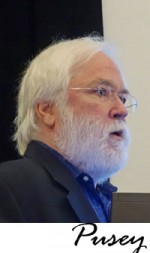 We try to look at legal issues as we would hope a good popular magazine would,” said Allen Pusey, the magazine’s Editor and Publisher. That means not only writing in a clear and bright style but also eschewing technical material in favor of topics that are broadly relevant--and sometimes edgy. The magazine recently ran stories on the efforts of state legislatures to corral court decisions, the need for national forensics standards, and how the chief prosecutor for the Gitmo military commission applies, in Pusey’s words, “his considerable personal integrity to a system based on torture.”
We try to look at legal issues as we would hope a good popular magazine would,” said Allen Pusey, the magazine’s Editor and Publisher. That means not only writing in a clear and bright style but also eschewing technical material in favor of topics that are broadly relevant--and sometimes edgy. The magazine recently ran stories on the efforts of state legislatures to corral court decisions, the need for national forensics standards, and how the chief prosecutor for the Gitmo military commission applies, in Pusey’s words, “his considerable personal integrity to a system based on torture.”
The magazine has also introduced departments such as “Hearsay” with entertaining short items and “The Docket” which includes Supreme Court or Appellate Court decisions or issues coming up in the courts that are of general interest.
An annual August issue has a cultural section with topics such as the greatest novels that deal with legal subjects and the best movie scenes that instruct people in legal matters. It sponsors, in conjunction with the University of Alabama and the National Book Festival, the Harper Lee contest for the best work of fiction about lawyers.
The magazine has redesigned its website for a more modern look and an improved search and navigation system. “We have also integrated the structure and the philosophy of what the magazine does with the news site,” says Pusey. “The magazine is the news site and the news site is the magazine. We work hard at this.”
Story and photos by Phillip M. Perry
Posted August 28, 2014
On Internet publishing sites, readers hold sway
“Do readers like our stories?” That time-honored query of the conscientious editor was once answered informally by the occasional angry letter from—or casual chat with—a subscriber. In the best of times an editor would seek wisdom from runes scratched into reader surveys received months after articles appeared in print.
Thanks to the Internet, the editor now receives an answer pronto. Online business publications receive instant reader response—not only when a new story is posted but also when its headline and copy are fiddled with in an attempt to create a more compelling package. The feedback arrives in the forms of mouse clicks and social media shares. How many? The more the better.
Readers, in essence, have crept out of the shadows to take a seat at the editorial desk. Three business editors discussed the resulting challenges at a panel titled “Meet the Editors: Business Journalism,” held in April at the annual conference of the American Society of Journalists and Authors (ASJA). Panelists (pictured left to right) were Gabrielle Solomon, assistant managing editor of CNNMoney.com; James Rogers, managing editor of TheStreet.com; and Allison Fass, deputy editor of strategy and business development at Inc.com. Moderator Minda Zetlin (pictured far right) is president of the ASJA and author of the “Start Me Up” column on Inc.com.
View me
One measure of reader response is the page view, or a request via mouse click to load a web page. During the first couple of weeks after publication a good story at Inc.com might receive 10,000 page views, and a stronger one as many as 100,000 to 250,000. “Over many, many months it's possible for an article to be accumulating tons of page views,” noted Fass.
In the quest for more page views the chief weapon is a great headline with a high profile subject. “It's the bigger, sexier stocks that move the needle for us,” says Rogers, pointing to examples such as Apple, Netflix, Amazon, and Tesla. “You could write about those stocks all day and still get quite a decent return.”
Little wonder that editors and writers spend a lot of psychic energy discovering the relative powers of various headline wording. Even the right word placement can make a difference: Will more people load a story, for example, if the word “Tesla” appears at the beginning or at the end of a headline?
Please share
As important as is the page view, many publications thirst after the more powerful quarry of the social share. Here the question extends beyond self-interest: Is a particular story so valuable that readers want to tell their friends about it? Shares trump clicks because of their power to expand the market reach of a publication exponentially. “Any article that's getting shared a lot is scaling our traffic,” says Fass. “It’s growing our potential traffic by many magnitudes if all those other people are also sharing the story on our behalf.”
 Potential stories, then, are weighed on a scale of sociability. “Something we always think about is whether a story is a ‘talker’,” says Solomon. “Is this something that people are going to be discussing in the elevator or when they get home with their family? Are they going to say, ‘Oh I read this great story on CNNMoney.com about big ass fans.’ We want to be part of that conversation.”
Potential stories, then, are weighed on a scale of sociability. “Something we always think about is whether a story is a ‘talker’,” says Solomon. “Is this something that people are going to be discussing in the elevator or when they get home with their family? Are they going to say, ‘Oh I read this great story on CNNMoney.com about big ass fans.’ We want to be part of that conversation.”
The editors prime the social pump through aggressive posting, especially on Twitter which receives a post for every story published on all three sites—and in the case of Inc.com, two or three posts. Other media are not ignored: About 30 percent of the posted stories at Inc.com, for example, go on to Facebook and LinkedIn.
As popular as it is, Twitter presents editors with the challenge of striking while the iron is hot. The need to post quickly is felt especially at TheStreet.Com which deals with market changing information. “The window in which a story is hot on Twitter is about seven minutes,” says Rogers. “Editors have to work with our social media teams to make sure stories go up in the correct period of time. Otherwise we miss that window.” The ordeal is worth it: “If you hit that window it can be page view gold.”
More is better
Unlike their print cousins, Internet sites are not constrained by the paper margin: Content can go on seemingly forever without fear of overextension. That means as many stories can be posted as can be created. “Since we have no print costs, whatever we can publish, as long as it’s quality, is good,” says Rogers. Such freedom is bound to carry with it a growing pressure to pump out copy. TheStreet.com wants to increase the number of stories it publishes, which has risen from a daily total of around 80 or 90 a year ago to a current level of nearly 130. “My bosses want me to increase that by 30 to 50 more titles a day,” says Rogers.
 The pressure to produce is mitigated somewhat by the length of the online story—which is seldom longer than 700 words at any of the three sites. Yet the need to engineer the production of so many story starts can put pressure on the staff. “We've got two teams of editors,” says Rogers. “One is for the newsroom which is very small—maybe two or three people. Then we have another team that works specifically with our contributors. There are only about seven or eight of those working in shifts throughout the day, and they're dealing with huge amounts of copy.”
The pressure to produce is mitigated somewhat by the length of the online story—which is seldom longer than 700 words at any of the three sites. Yet the need to engineer the production of so many story starts can put pressure on the staff. “We've got two teams of editors,” says Rogers. “One is for the newsroom which is very small—maybe two or three people. Then we have another team that works specifically with our contributors. There are only about seven or eight of those working in shifts throughout the day, and they're dealing with huge amounts of copy.”
Much of that copy comes from outsiders. Indeed, TheStreet.com has been trimming its staff of from 12 to 20 journalists in favor of utilizing more outside writers. Today the site draws regularly from nearly 40 regular contributors whom Rogers refers to as “inner sanctum” members. If the additional sources who supply occasional pieces are thrown into the pot the total comes to nearly 180. And fasten your seat belts: “We want to increase that three, four or fivefold,” said Rogers.
TheStreet.com is not alone in pulling copy from an impressive number of freelancers: Inc.com, for example, has over 100 contributors. Of course a Content Management System (CMS), into which writers input copy directly, can streamline the workflow dramatically. “It used to be that people would email us all their copy,” says Rogers. “We have done a lot of work on our CMS as a means for increasing our workflow, getting more content, and attracting more contributors.”
Writers, for their part, are expected to be more entrepreneurial and to take on more of the editorial tasks from fact checking to headline writing and SEO optimization. “A lot of the editing process is starting to fall back on the writers themselves,” says Rogers. “Things like working with headlines to generate more clicks, improving leads, and optimizing copy for search engines—we just don't have as much time to work with that stuff as we would like.” And many writers are falling into line. “We're seeing a new rash of contributors come through who are very familiar with a lot of these things,” says Rogers. “They use Google Trends, for example, to work out which headlines are going to be best for them.”
The human factor
The right headline can inspire more mouse clicks, but what do readers want in subject matter? Given the impersonal nature of the Internet, and of technology and business in general, it is perhaps ironic that human interest and personal fulfillment stories seem to be attracting more attention than ever. “A lot of the stories that I'm reading and doing on the Inc.Com site seem to be what I wouldn't have thought of as business stories a few years ago,” says moderator Zetlin in pointing to such themes.
 “A lot of our best content is broadly about productivity and the development of habits that make you successful at work,” says Fass, noting that today’s most popular topics include the need for charisma, what to do and say every day to be the best that you can be, the habits of happy people, and how to be more productive.
“A lot of our best content is broadly about productivity and the development of habits that make you successful at work,” says Fass, noting that today’s most popular topics include the need for charisma, what to do and say every day to be the best that you can be, the habits of happy people, and how to be more productive.
The reason? “These topics are really popular among the entrepreneurial community in New York and Silicon Valley,” says Fass. “Startups are talking about these ideas in terms of how they affect company culture and why that matters to growth and success as an organization.”
A good example of this trend was the popularity of a recent Inc.com story titled "The Psychological Price of Entrepreneurship" by Jessica Bruder. Editor Fass notes that the story is “all about the psychological struggle of starting your own company, and also in some cases a tendency for the type of people who might have psychological issues to become entrepreneurs. It's a very interesting, very well written and reported piece.”
Fass is heartened that the story “has been one of our most trafficked pieces of content on Inc.com since it went up. It continues to perform very well organically, and every time that we promote it again through social media. I am passionate about serious journalism and I love the fact that it can get a lot of traffic.”
Moderator Zetlin concluded that a successful online business story requires three factors. The first is a headline, written for human eyes, which is “so compelling that you absolutely can't resist the urge to click on it.” The second is a title (which appears at the top of the browser window) optimized for SEO algorithms. The third is what might be defined as sociability: “What really makes a story successful is that once you've clicked on it and read it you have also an uncontrollable urge to send it along to your friends or your social media circles.”
The Inc.com story about the price of entrepreneurship provides a case in point. “It's reporting from inside this interesting world of startups,” says Zetlin. “It's about business, and at the same time it's very intimate and very human.”
Story and photos by Phillip M. Perry
Posted June 11, 2014
Farm Journal Media Plans to Double Size (Again)
“Think a decimal bigger.” That ambitious directive from CEO Andy Weber (pictured) has become a winning mantra at Farm Journal Media, a fully integrated multimedia company that has doubled in size over the past five years.
“I want my division presidents to be concerned with $500,000 projects, not $50,000 ones,” explains Weber. “I want my sales guys to deliver $100,000 to $200,000 projects, not $10,000 to $20,000 ones.”
Double Up
Weber’s big think initiative, combined with a determination to bust silos and institutionalize innovation, has allowed his 137-year old company to fuel expansion through internal growth rather than acquisition. Today Farm Journal Media maintains 41 products that generate over 23,000,000 monthly agricultural touch points. And Weber plans to double the firm’s size again over the next five years.
Weber discussed his company’s progress and plans in a keynote address at a recent FOLIO: 100 Awards Ceremony in New York City. As might be expected, the firm has taken an aggressive plunge into digital. “We have grown our digital revenues 350 percent in the last five years,” says Weber. “It now represents well over 20 percent of our business.”
Weber highlighted one digital product: Commodity Update. This acquisition is now a multimillion dollar text marketing business that has grown to 75,000 subscribers from the 15,000 when it was purchased. It now has an 80 percent market share in the agricultural text marketing messaging business.
While only a third of the company’s revenues come from print advertising, that portion is 35 percent bigger than a decade ago. Again, the increase resulted from internal growth rather than acquisitions. Print products include the company’s flagship Farm Journal, as well as Top Producer, Beef Today, Dairy Today and Implement & Tractor.
“We're not deemphasizing print,” says Weber. “The flagship publication will always be part of our culture.” Together, digital and print revenues represent about half the company’s business.
Fueling growth
Weber attributed the company's decade-long success story to a number of growth-oriented initiatives in addition to the “think a decimal bigger” mindset. One goes under the slogan The Drive for 25. “The idea was to grow in profit 25 percent a year and maintain a 25 percent EBITDA margin (and if we go above that, plug it back into growth). Then, finally, achieve $25,000,000 in EBITDA.”
Another initiative was to break down silos. “We consolidated three sales forces--print, TV and the internet-- into one,” says Weber. “We now have three divisions working through one senior vice president of sales with one sales structure and one sales force. The division presidents obviously had to buy into that, and they really did buy into it, because they helped craft it. They were involved in it from the grass roots.”
Sales training was overhauled to reflect the new spirit of cross fertilization. Reps, for example, were trained in all media. “Our print reps learned internet and TV and our internet reps learned TV and print.”
The compensation structure has been realigned to match this new matrix, says Weber. “Each senior manager still has an annual bonus directly tied to a particular responsibility, but they also have a separate significant bonus provision that's tied to overall company performance. Then they all participate in an equity program that's tied to The Drive for 25.”
Content silos fell as well. “We added secondary responsibilities to all of our content generators, whether they were in TV, internet or print,” says Weber. Now all major industry happenings are covered with true cross content multimedia. “This gives audiences information when they want it and how they want it, and it creates an environment for advertisers to surround their customers with our products.”
Eliminating silos helped the company better serve clients with total solutions, says Weber. “Instead of competing with ourselves internally we concentrated all our efforts on solving client needs.”
New faces
The company also re-engineered its staff. “We didn't have all the right players in the right spots, we didn't have enough players, and we needed to improve the talent level in the company,” says Weber. “One of the first things we did was add a senior vice president of content development. On the content side we recruited best of class in the industry and we recruited people that got the multimedia concept.”
On the go-to-market side, the company found itself going outside the publishing industry, hiring B2B market guru Mitch Rouda when digital revenues had stalled at 10 to 11 percent of total revenues.
One of the most important initiatives was to institutionalize innovation. “Creativity has to be cultural,” says Weber. The results were favorable: Of the 26 products introduced in the past five years only three were acquired—the remainder were developed from scratch.
A big part of promoting creativity was a recognition of the attendant risk, says Weber. “You have to encourage people to take risk and you can't kill them when a project fails unless it fails for the wrong reasons.” Indeed, over the past decade the company developed around 10 projects that were failures or only marginally successful.
Do it again
Despite its rapid growth the company has managed to maintain strong financials, says Weber. “We are rock solid financially with an EBITDA margin of 27 percent and an extremely solid balance sheet that will be a springboard for future growth.”
And future growth is on the table. “We're planning to double the size of the company again in the next five years, while holding a 30 percent EBITDA margin” says Weber. “The growth will come equally from core products, from product development, and from mergers and acquisitions.”
Some special attention will be paid to end user revenues, which Weber would like to grow to 45 percent of company business from a current level of just under 30 percent. (“End user revenues” refers to subscriptions, memberships, data transactions and events.)
Weber recognizes that beefing up end user sales will require new talent. “We’ve done pretty well for a bunch of media guys, but we need more DNA from people who know how to look at pain points, devise products that sell those pain points, and then make money off pain relief. That’s what I call the end user business.”
Photo and story by Phillip M. Perry
Posted Feb. 12, 2014
Inc. Redesign Required ‘Political Acumen’
Every magazine needs to refresh its brand once in a while. But when Inc. decided its own time had come for a design makeover, editor-in-chief Eric Schurenberg (pictured) realized he had to approach the task with a certain degree of delicacy.
“We have a brand that is really powerful,” he told an audience at a recent Folio Magazine MediaNext conference. “It has been around a long time and redesigning that brand is something you want to approach very carefully.”
The wrong design moves can do more harm than good. Get too far ahead of the reader and you risk a subscriber revolt; lag too far behind and you flirt with irrelevance.
Satisfying the public, in short, is a challenge. “Readers never ask for a redesign,” Schurenberg pointed out. “In fact, after a redesign most readers write you pathetic letters saying what did you do to my magazine? Bring it back! But you have to change with the times. You have to evolve with the way readers evolve in their readership habits--whether they recognize it or not.”
Then there’s another group of stakeholders to think about. “Unlike readers, advertisers will ask for a redesign,” says Schurenberg. “They want to be next to the latest and hottest thing in an environment where their product looks good by association. If there were no other reason to redesign a publishing property, satisfying advertisers would be a sufficient one.”
Internally, a magazine redesign promises important benefits: Ripping up and reassembling a brand can help facilitate a productive editorial environment. “From the managerial point of view a redesign allows me to tell my staff we are making a clean break from the past,” said Schurenberg. “I don’t have to put myself in the position of saying that a column or an article is dumb; it’s better to say ‘we are rethinking from the ground up and doing a whole new redesign.’”
Play politics
A successful redesign engages the entire publishing team. “A redesign in the real world is not just an act of creativity; it’s also an act requiring political acumen,” cautioned Schurenberg. Everyone wants to feel included. “You have to go around to all the stakeholders and find out what they hope to achieve. That’s often very different from what you had in mind.” Every suggestion is valuable, he added: Even ideas uninformed by design expertise can be interpreted by a professional in ways that strengthen the final product.
Schurenberg consulted with staff editors as well as the company president and the directors of sales and creative. One theme common to everyone: Go big. “No one said ‘let’s just adjust things, let’s make incremental improvements,” said Schurenberg. The company president, for example “didn’t want to spend all that money and then have to report to the owner that we had something no one could recognize as being really different.”
For ideas to prime the pump Schurenberg looked at two recently retooled magazines: Garden and Gun, and Institutional Investor. “They were both designed by the same guy: Tom Brown of Vancouver,” said Schurenberg. “We decided he would be our redesign guru for the new look of Inc.”
Coordinate efforts . . .
From the start Inc. aimed for a coordinated print and web effort. “Integration is key,” said Schurenberg. “Not only artistically but also because advertisers increasingly want to see their creative in what looks like the same environment across platforms.”
A good deal of the success in doing so relies on the appeal of identical fonts which look good in both the magazine and the web. “The most fundamental element in a redesign is the choice of fonts,” said Schurenberg. “Tom Brown selected two which work beautifully together: Klavika for display and Mercury for body copy.”
 The two media are also tied together by a graphic flourish. “Tom Brown is known for little graphic signatures,” said Schurenberg. “For Inc. he designed this squiggle around the captions. I have dubbed it ‘the mark of Zorro.’”
The two media are also tied together by a graphic flourish. “Tom Brown is known for little graphic signatures,” said Schurenberg. “For Inc. he designed this squiggle around the captions. I have dubbed it ‘the mark of Zorro.’”
Coordinated they may be, but print and web also demanded substantial individual effort. Which medium would receive the initial round of attention? “We decided to start with the magazine,” said Schurenberg. In defending the ‘paper first’ approach Schurenberg suggested audience members consider their own experiences. “How many of your star subjects want to be on the cover of your magazine?” he posed. “How many find that thrilling and how many have their PR people bend your editor’s ear to get that? Now think: How many put the same effort into getting on the home page of your web site?”
But perhaps the paper-first decision relied less on sober analysis and more on the Inc. culture, suggested Schurenberg. “The magazine is the flagship of Inc. Somehow the print version of a publication confers an authority, a validation that the web site just doesn’t have.”
The most important element in the print redesign was something that was hiding in plain sight: paper. Schurenberg had learned from his previous experience redesigning Money Magazine that poor paper can muddy the best looking visuals. “From the beginning of the redesign of Inc. I made it clear that the whole exercise would be pointless if we kept using the same cut rate paper,” said Schurenberg.
Schurenberg’s appeal was successful. “The owner agreed to increase the paper quality by 40 percent. It was absolutely essential to the success of the redesign. Probably something around 50 percent of the praise this redesign has garnered is actually praise for the quality of the paper.”
. . . from web to print . . .
Print is king but web is counselor. The Inc. web site provided useful clues into reader proclivities that helped guide the print remake. One was the value audiences place on news categories. “We know that readers on the web site are used to getting channels of information,” noted Schurenberg. “Channels are useful for categorizing the huge mass of information on the web site and are also very good ways to package content for advertisers.”
In a manner similar to the web site, the print magazine content was broken down into four channels. Three were Launch (about startups); Lead (about leadership), and Innovate. The fourth channel rotates among the three topics of Money (raising or managing); Technology; and Make (about manufacturing in the US by entrepreneurs). “Every channel has its own pacing, its own short stories, a newsy upfront, features and columns,” pointed out Schurenberg. “Each is distinguished by a title page and a color.”
The web also offered insights into reader pacing in the digital era. “You can’t escape the fact that readers love listicles,” said Schurenberg. “And readers run out of steam at around 750 words for an article. So we went on to create a lot of one page stories that top out around 650 words.”
. . . and from print to web
If the web site provided reader behavior insights that could be used to redesign the paper magazine, the latter offered resources to energize the web site.
The first: photographs. “Inc., like other magazines, has a photo department with editors,” said Schurenberg. “It has relationships with photographers and studios and sends people out on shoots. We don’t do that on Inc.com; it’s hard to imagine how you could justify the cost.”
But photos from the print edition can be used on the electronic one. “We get beautiful photography, 90 percent of which doesn’t have to end up on the cutting room floor because it can move over to Inc.com”
And photography means more than just single shots: Photo essays, long popular in the print universe, can be transmogrified into online slide shows. The latter are popular, if somewhat controversial. “Slide shows are a cheap way to get clicks and are often looked down on,” said Schurenberg. That need not be the case. “If they start out as photo essays by professional photographers and are carefully thought out then you can do all the slide shows you want.”
Another print resource: infographics. “The trouble required to put them together means that on most web sites infographics are created by someone else and often associated with advertisers,” said Schurenberg. The print magazine, with its full staff, can economically justify the production of infographics that move online.
Finally, the print magazine offers its web site partner a possibly counterintuitive resource: lengthy articles. “Magazines are of course the last bastion of long form journalism,” said Schurenberg. “But let it not be said that web readers have no appetite for features.”
Schurenberg cited as example a lengthy feature, recently published in print, on the psychological cost of being an entrepreneur. “When it went online it got 50,000 shares--the second most shares of any story we have ever done--even those stories of 650 words,” said Schurenberg. “The subject touched a nerve among readers.”
White space and photos
The web site redesign presented its own challenge: How would Inc. transmute the mandate for elegance and boldness into pixels? One way was to clean up the presentation. “Our web designer Haewon Kye created a lot more white space,” said Schurenberg. “This made the site look very different from the one before which—like so many other web sites—had become more cluttered over time.”
A second element was the introduction of larger photographs. “Our original carousel images were 575 by 250 or so,” said Schurenberg. “Now they are 970 by 450. They pack a much bigger punch and make the site look better and show off the magazine photography in a much better way.”
The third decision was to offer more content. “Previously Inc. had followed the blogger river lineup on its channel and home pages,” said Schurenberg. “We went to a pin board which allowed us to service a lot more content.”
Now visitors to the Inc. web site immediately see four stories. Scrolling to the right or the left reveals four more. Hovering the mouse over the channel navigation heads uncovers still more. “Altogether without scrolling down you see 48 stories just by moving the mouse around,” said Schurenberg. “With the previous design you had to wait for the carousel and you would see five stories in 15 to 20 seconds.” The new design puts more hooks in the water to land more impressions.
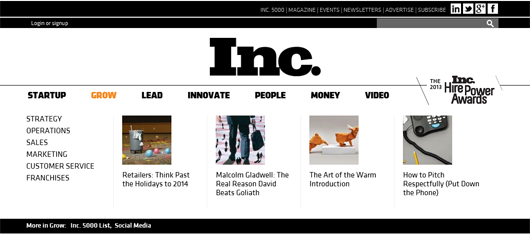 The pinboard layout also facilitated the abandonment of the customary advertising location. “Readers have been conditioned to think of the right rail as the other side of the tracks, a place where you never need to look,” said Schurenberg. In contrast, the pinboard layout allows ads to be integrated with—while clearly differentiated from—editorial. “By getting rid of the right rail we have increased our usable space and created a more fetching design.”
The pinboard layout also facilitated the abandonment of the customary advertising location. “Readers have been conditioned to think of the right rail as the other side of the tracks, a place where you never need to look,” said Schurenberg. In contrast, the pinboard layout allows ads to be integrated with—while clearly differentiated from—editorial. “By getting rid of the right rail we have increased our usable space and created a more fetching design.”
It all comes together to create an integrated experience which is immediately discernible to the public eye. “If you are walking behind someone and they drop a magazine and it opens to a spread you should know what magazine it is without looking at the cover,” said Schurenberg. “You can do that now with Inc. And if someone drops a laptop and it opens to our site you know it is Inc.—even if all you have ever read was the print magazine.”
The redesign seems to have reached its goal. “So far responses are running three to one in favor of the print redesign,” said Schurenberg. “That’s far better than I expected.” Online results, he added, are harder to come by. Not only is the redesign still too new, but web site remakes always create technical problems that can muddy the reader acceptance picture.
While the redesign has been a success, challenges remain. One of the more difficult is the feeding of the voracious picture monster. “We have a site that strives to be as beautiful as possible, so we can’t get away with stock images,” said Schurenberg. “That increases the burden on the photo editor who has to come up with interesting images that are worthy of 970 by 450. That is a full time job. We do about 40 pieces of copy a day.”
Photo and story by Phillip M. Perry
Written November 20, 2013
Fortune Sets Course on “Brands Within a Brand”
When Fortune managing editor Andy Serwer describes his occupation to an inquisitive taxi driver, the usual reaction is some variation of “oh yes—the Fortune 500.” That common refrain testifies to the importance of the magazine’s annual compendium of top performing companies—and to that list’s high level of recognition in the public imagination. “The Fortune 500 is actually a stronger brand than Fortune,” says Serwer.
That top-of-mind presence makes for plenty of opportunity. The magazine’s ongoing efforts have made the Fortune 500 theme more than just a tool for raising the profile of the publication in the public mind. As advertisers flock to glow in its aura, the Fortune 500 has become a powerful revenue generator in its own right, an example of what Serwer calls a brand within a brand, or a franchise.
Brand play
If a marketing paradigm works well for one franchise, why not for others? That was the crux of remarks made by Serwer (pictured right) during an interview with Samir A. Husni, (at left) at this year’s Publishing Business Conference and Expo, sponsored by Publishing Executive, in New York City.
After all, the Fortune 500 is just the most widely known of the magazine’s franchises. Others include the 50 Most Powerful Women, the 100 Best Companies to Work For, the World’s Most Admired Companies, and the 40 under 40. When Serwer accepted his current position in 2006 he was determined to transmute those franchises into master gears for the publication’s profit machine. “We have 18 issues a year and I want to make sure every issue has one of these franchises,” he says.
At first blush, such branding initiatives look similar to the special issues common elsewhere in magazine publishing. A franchise-based issue, after all, attracts advertisers--not only those who want to be close to a particular section but (even better) those who are happy to be anywhere at all in the issue. “That’s when you hit the sweet spot,” notes Serwer, concerning the arrival of the liberal advertising mindset. “Then you are able to do all kinds of edit.”
Triple Play
As vital as it is, though, the print platform is just one of three on which the franchise performs its magic. “We want to blow it out across all our platforms,” says Serwer in reference to print, digital and live events. “We drive advertising across all three. When someone is sponsoring one of our live events, for example, we encourage them to buy advertising in the magazine and on the web site as well.” (The magazine gets about 25 percent of its revenues from is digital platform; the remainder from print advertising and conferences).
Groundwork begins about three months in advance of a franchise roll out. Preparation for the recent 40 Under 40 was typical: The process began with a meeting of representatives from publishing, print, media relations, web, and events. This group developed a theme and hatched plans to roll it out to the target platforms.
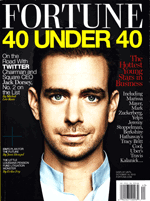 As a practical matter, print might be viewed as anchor and springboard for the other platforms. “The magazine does all the usual magazine stuff,” says Serwer. “We ask ‘What would be a great lead article? How many sidebars? What are some other articles? Charts?’ Then we plan to do a walk up: Leading up to the issue we may do a reader’s poll with questions such as ‘Who do you think are the top 40 under 40?’ We may poll CEOs and the previous 40 under 40.” In short, the magazine does anything it can to strengthen reader investment before the franchise rolls out.
As a practical matter, print might be viewed as anchor and springboard for the other platforms. “The magazine does all the usual magazine stuff,” says Serwer. “We ask ‘What would be a great lead article? How many sidebars? What are some other articles? Charts?’ Then we plan to do a walk up: Leading up to the issue we may do a reader’s poll with questions such as ‘Who do you think are the top 40 under 40?’ We may poll CEOs and the previous 40 under 40.” In short, the magazine does anything it can to strengthen reader investment before the franchise rolls out.
The digital leg on the franchise stool is more than just a simple list or article posted on the web, notes Serwer. “We do video, photo galleries, sidebars--a lot of incredibly creative stuff that works on the web or tablet.” An attempt is also made to get the involved writers and editors on TV.
The third platform comprised of live events, notes Serwer, can be tricky. They exist at three levels, each distinguished by a characteristic investment of time and money. “First, you can just throw money away--have a party,” he says. “Sometimes that’s the right thing to do. Then, at a higher level, you can have a live event sponsored by someone. That’s easy: You get a bunch of beer and a company spokesperson at the event.”
The third level of event demands more planning. “The next step is a real conference event for which people pay to come,” says Serwer. “While that is much more difficult, you start being able to have two streams of revenue: One is from attendees, who are like magazine readers; the second is from sponsors, who are like advertisers.”
As a practical matter, it can be smart to start each franchise on the first level and climb up. “We like to build events,” says Serwer. “You start small with a party and build to an event with paid attendees.”
The new editor
“Magazine, digital and conferences – I feel good about having the three legs,” says Serwer. Maybe so, but synchronizing so much activity can be quite a challenge. Today’s magazine environment is characterized by layers of complexity unheard of in the days when an editor’s job meant nothing more than guiding writers and producing copy.
While digital transformation is among the new challenges demanding attention from editors such as Serwer, he cautions against getting ahead of readers. “It is so vexing and curious and changeable in terms of the continuum of readers who want print versus digital,” he says. “Let’s take women’s magazines as an example. Our magazine In Style is putting out its biggest issues ever. Why? If you ask a reader ‘would you buy this magazine if there were no ads?’ The reader would say ‘are you kidding? Of course not. We want the ads. They are part of the experience.’ The advertisers say halleluiah. So are you going to say ‘we have to convert all our readers to digital and close down our print edition?’ No. I don’t think you have the same urgency to move to digital at all.”
Many women’s magazines, these comments suggest, might be positioned at the lower end of the digital transformation continuum. If newspapers are on the upper end, business magazines find themselves knocking about somewhere in the middle. “We have a tech savvy readership,” says Serwer. “Many of our readers have several smart phones and other mobile devices. They are trying everything all the time. So our first instinct was to rush into digital willy-nilly, and we have. Our tablet app is fantastic.”
The new reader
Even so, says Serwer, a pure digital play for Fortune would likely be a losing gamble. “We discovered, like others, that consumers have been a little slower to change over to tablets and apps than we had thought. That’s because magazines are a different experience. People are staring at screens all day long, to the extent that a magazine is a respite. That is probably a really important point of differentiation. Our magazine is vital information but is also something you can look at to provide some sort of break from work even though it is about work. It is offering long form journalism where you can lean back.”
In light of this reader behavior, Fortune is refraining from digital overreach. “We realize we need to take it easy a little bit,” says Serwer. “We need to go strong but not lose sleep over the fact that our readers are not converting as fast we anticipated. The reason is that they still like the magazine.”
So who is the digital reader? An individual pretty similar to the one for print—although there are some subtle differences. “The people arriving at the digital platform are not as different as you might think from those reading the print magazine,” says Serwer. “Yes, they are younger and there are more women. But they are still aspirational business people. They want to join the Fortune 500 companies or work there or do business with them.
“Our typical reader is a 50 year old guy getting on a plane at the airport,” adds Serwer. “But we also want to get the 26 year old Indian woman PhD at Stanford who works at Google. I think she is increasingly a reader and it’s probably true that she is more digital.”
All such digital talk refers primarily to the tablet, and that device presents magazines with a challenge that is still being defined. “This is still the early days as far as the tablet goes,” says Serwer. “It provides an experience which is as distinct from that of a web site as the magazine is from live events.” Readers can get Fortune through all of those channels, as well as mobile. “Getting information on mobile through social media is how people are increasingly getting Fortune,” says Serwer. “People read stories on Facebook and on Twitter and LinkedIn and come to the web site that way.”
The new journalist
The transmogrification of the media landscape challenge writers as well as editors. “Our journalists have to be multimedia and multitalented people,” says Serwer. “My ideal journalist is someone who writes, edits, does social, does TV, and can host live events. And especially does great long form journalism. Very few people do all those things but if I can get people who do three of those well, that’s great.”
The danger, of course, is burn out. The risk can be particularly high with a magazine such as Fortune, where a staff of scores of journalists is going up against far larger competitors. “We compete against Bloomberg and Dow Jones and Reuters-- companies with thousands of journalists,” says Serwer. “So punching above your weight is very important. We don’t have the option to let six people sit around all day and talk about some story they might do. We have to go out and get it.”
These comments inspired moderator Husni to ask if today’s journalists are being overloaded with responsibilities. “I think about that every second of the day,” says Serwer. “It’s really tough. I am scared of burning them out. People are being pulled in so many directions. It requires a lot of management; a lot of balance. And particularly for our tech journalists: They are being bombarded with new social media, new platforms and new things to try. And there seems to be a new tech website every week.”
The new company
For Fortune, the shifting media landscape is further unsettled by yet another seismic event: the spin-off of Time Inc. from Time Warner. “That adds another level of complexity which I hope none of you have to go through while simultaneously running your magazines and your web sites,” says Serwer. “It’s like playing a game of 3D chess against Mr. Spock.”
On balance, the spinoff is a net positive. “We have been a little tail on a big media company dog,” says Serwer. “We sent all our money back up to Time Warner and our CEO took that money and invested it into the movie business and HBO and Turner which was probably wise from his perspective because he could get a higher return. But it meant our magazine company was somewhat starved for capital and had our hands tied that way. And as 10 percent of Time Warner we would not necessarily get the attention and love we needed.”
Too, as a joint venture Fortune has not been able to devote the concentrated attention requisite to building a digital brand. “We have had a joint venture with CNN so that Fortune has been under the umbrella of CNN Money,” says Serwer. “That has been good on the one hand because it has provided us with a lot of traffic and a lot of dollars that follow that traffic. On the other hand our brand has been very sublimated in the digital space so if you find a story it will say CNN Money and maybe it will say Fortune somewhere.”
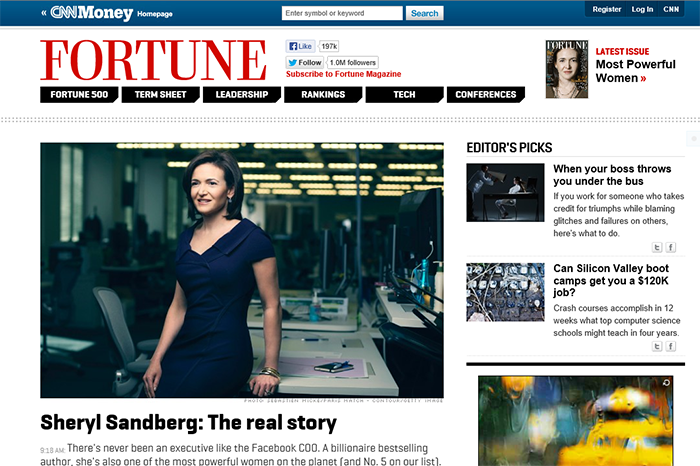
That kind of brand diffusion is not optimal, says Serwer. “Putting together a joint venture and slapping a name on it is not really brand building.” Post spinoff, the magazine will be able to invest more directly in its brand. “I am very excited that we will be able to build out our web site and digital business.”
As all of the above proceeds, Fortune will be making its decisions under a watchful public eye. “We will be an independent public company,” says Serwer “That’s slightly daunting. You can make the argument that it’s a good thing to be private during the transition because it requires a longer time frame and the public markets are usually not so good in being patient that way. On the other hand it will be great to have the visibility and discipline. You can suffer from a lack of discipline. We will be under the microscope and scrutinized and we will be held accountable to our decisions.”
The road ahead
If all goes well in its break from the past, Fortune will come out the other side as a stronger entity. “I want the spinoff to go well,” says Serwer. “I want to make sure we have the capital to invest in our web site and the wherewithal to flow through.”
Serwer anticipates that successful brand building will position Fortune for long term health. “Sure, we are going to be around this year and next, but what’s it going to be like five years from now? I want to make sure that when I leave the position of editor Fortune is a strong, sustainable, thriving journalistic enterprise. That’s my most important job.”
Story and photo by Phillip M. Perry
Written October 11, 2013
Editors Battle Advertisers for High Ground
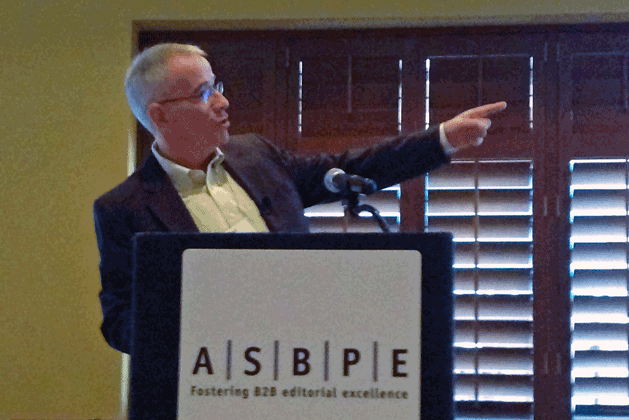
The editor was showing off the latest issue of his glossy business magazine. Big. Bulky. Packed with full page ads. Everything shouted one vigorous message: Business is great.
Paul Conley shook his head—inwardly, at least. “I didn’t have the heart to tell him all those ads were ‘make goods.’”
Grim anecdote, true. But emblematic of today’s print world, according to the veteran publishing consultant and VP of CFO Publishing. If Conley has seen many publishing trends come and go, the latest ones all seem to be pointed in one direction: down. “Things are getting worse and worse.”
Making good
The culprit is the same Internet shift gnawing at industries from newspapers to recording artists to business supply stores. Print magazine publishers, for their part, are trying a number of techniques intended to shore up profits. The problem is that advertisers are not happy with the results.
“Advertisers tend to find b2b disappointing,” reported Conley, speaking at last month’s annual conference of the American Society of Business Press Editors (ASBPE). “Not the editorial content, but the business model. That makes it harder to monetize what we do on the editorial team.”
Solutions, though, seem few. “Banner ads were doing okay for awhile, but no one is doing too well with banner ads anymore,” noted Conley. “Then publishers moved toward ‘lead generation’ sales. But lead gen is not working.”
Magazines are resorting to spamming their audiences while advertisers demand ‘make goods’ for ads that fail to pull in the promised leads. Hence the happy but hapless editor in this article’s opening story. “Sales people know about the problem but editorial teams do not,” said Conley. “They have no idea how bad things have become.”
Enter Native Advertising
Like a life saver dropped to a drowning man comes the shout of a desperate captain: Sell editorial!
No one will use those exact words, preferring the more ethically sheltered sobriquets of “native advertising” and “content marketing.” Whatever the terms, they suggest for editorial a certain shifting of ground. Publishers are seeking a way to monetize their product in a way that capitalizes on the faith readers have invested in the sacred space of the editorial temple.
“The worst piece of news I have is that that the battle for the integrity of the editorial stream is lost,” said Conley. “We lost that battle largely because people on the editorial side were not paying attention. They did not know the battle was happening. So advertisers will continue to put pressure on publishers. You will see this soon in your brand. You will either make the adjustment or your brand will continue to stumble.”
Just what is native advertising? Definitions vary by aspect, but those with deep pockets have the idea that money talks. Conley reported that in a recent emarketer.com survey, nine of 10 North American manufacturers agreed with this definition of native advertising: Content produced for or by the advertiser that runs within the editorial stream. “Not along the side,” noted Conley, “but within space that has traditionally been sacred to us. Their content runs there. That’s what they want because that is what’s working for them today.”
Rules of the Game
Intrusions by advertisers into editorial are something of an irony: Any benefits gained rely on that very tradition of an editorial cathedral the money changers threaten to sully. One might posit that at some point, when the purity of editorial is gone, the power of native advertising will diminish.
Editors, however, can take steps to maintain their integrity while acknowledging the new realities. Conley suggested setting ground rules. “This is where I want the next battle to be fought: When a publisher says we are going to do native advertising, editorial says ‘This is how we do it and it is not negotiable.’”
Conley presented the following four rules “to comfort editors, restrain the ad sales staff and make clear to media partners what you expect.”
- Native advertising must be transparently identified as an ad, even if it is in the well.
- Native advertising must be congruent with the publication’s mission.
- Native advertising must be interesting and have good copy. Editorial will decide these matters of judgment.
- The editorial staff must not work on the product. “There are a lot of really talented people that can help advertisers,” noted Conley. “Find them. Get a freelance stable and find out which ones will work with advertisers. Segregate your freelance staff.”
Going rogue
Some advertisers are bypassing the traditional editorial stream, carving out their own channels to readers. “Brands are doing their own content, getting away from us and what we have traditionally offered them,” said Conley.
An example of this is the Deloitte native advertising column that appears on the right hand side of The Wall Street Journal’s CFO section. The term Sponsored Content appears over the column of native advertising. Beneath it are the words: Please note: The Wall Street Journal News Department was not involved in the creation of the content above. If readers overlook such caveats they will be impressed by the quality of the work. “It is really good stuff,” said Conley. “They are producing stuff that I cannot argue for a second is inferior to what we do at CFO.”
The Deloitte column is just one example of an industry that has become fragmented. Other brands are starting their own tablet formatted industry magazines. New Internet vehicles are popping up, puncturing old verities and appealing to an interactive audience.
Here are some examples of feisty competitors: www.skift.com; http://www.bisnow.com/, and http://www.industrydive.com/
The b2b market, in brief, has become wildly competitive. “The old rule was that there were always three brands in every space: the market leader, the number two publication, and the new challenger,” said Conley. “Since there were only three places to get information the advertisers had to deal with us. That’s simply not true anymore.” And the more money brands put into captive editorial, produced by writers sometimes referred to as “embedded journalists,” the less money is available for advertising in traditional b2b vehicles.
At the same time, many new vehicles are producing material that is far more compelling than old b2b media’s mix of copy and pix. That can be a game changer in terms not only of profitability but also of business publishing in general, said Conley. “When was the last time you saw something in b2b that inspired you, that shook you up, that moved you? That you saw something you had not seen previously, that was truly revolutionary? When was the last time you saw something that made you walk across the office and say ‘did you see this?’ That was never a common experience in b2b. It is now.”
Aliens in the stream
A new breed of creators, better at making value and building audiences, is now challenging the world of traditional publishing. “The newer companies which are doing the moving, surprising work in b2b have a couple of things in common,” said Conley. “First they are driven by Gen X and increasingly by Gen Y. These people have lived their whole lives creating media, not just consuming it.”
Traditional executives are not prepared to compete. “Publishers are print centric, nostalgic, and are not adjusting well to the digital world,” said Conley. “And they are living within a financial structure that does not require them to be innovative. Private equity dominates the ownership of b2b. Private equity is not a business model; it is a wealth accumulation model. It’s about taking money from products for the investors, then growing the products and taking more money from them.”
That’s a recipe for short term thinking. Indeed, publishing executives very often look to flip their properties rather than spend years building a brand, said Conley. “It’s very hard to talk to those people about innovation, about investment in the staff, or about what the company will be like in 20 years.”
Anchored in text
Editorial, for its part, has also been reluctant to move forward. “We are still stuck trying to perfect the things that were important 10 years ago,” said Conley. “We have perfected print. Print is perfect.” At the same time, editors and writers are failing to master new media’s requisite skills. “We cannot edit a photo, cannot upload a video, don’t know how to record an audio. It’s extraordinary to me.”
Any editorial room conversation about the digital media tends to concentrate on old issues. As an example, Conley pointed to the continuing argument about the risk of external links causing visitors to leave a magazine’s site. That dialog is stale; the Internet has moved on. “As long as we continue to fight the battles of 10 years ago we will be unable to fight the upcoming ones,” said Conley.
Editors and writers must become more sophisticated about digital publishing, for the sake of their careers as well as their employers. “The younger people who are starting the new media companies are hiring entirely different kinds of journalists,” said Conley. “They come with new attitudes and new skill sets. It is a 100 percent cultural difference from five years ago. It makes it hard for older people like me to compete for money, attention, jobs, gigs. Younger people have a skill set I cannot duplicate.”
That, however, does not spell the end of careers. New skills can be acquired by those who are determined to do so. Reliability, revered for decades as paramount to success, is as vital today, and perhaps as scarce, as ever. Just as important, though, is flexibility: Cultivate a mind open to new media and digital procedures.
But editors and writers must do still more: They must heighten their public profiles. “It will be a lot easier to market yourself in the future if you become a leading voice in your area of coverage,” said Conley. “Move from being a reporter to being an analyst. Be media friendly. Be the person the press reaches out to on your topic. Create a personal brand.”
Photographs and text by Phillip M. Perry
August 2, 2013
